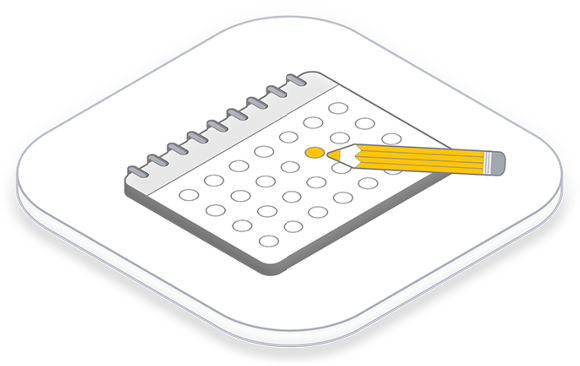In the last article “Unleash the power of words with ChatGPT!“, we provided a detailed picture of how AI tools can support you in creating a wide variety of text types. It turned out that ChatGPT, for example, is less suitable for generating ready-to-use content directly, but rather acts as a co-pilot that guides the author to the best possible result. But what are the most informative texts without supporting and appealing illustrations? There are now solutions for this too, which quickly produce convincing results. In the world of creativity and design, AI tools such as Dall-e are having a remarkable impact. The platform offers incredible opportunities for creatives, but using it effectively requires understanding and practice. In this post, we’ll look at the specific features, uses, tips and tricks for using Dall-e successfully.
What is Dall-e?
Dall-e is a specialized tool for generating images from text descriptions. Using deep learning and specially trained neural networks, Dall-e can generate a wide range of images based on the submitted text descriptions. The capabilities and applications of Dall-e include
- Image generation from text descriptions
Dall-e can create detailed images based on specific textual instructions. These texts can range from simple object descriptions to complex scenarios. - Creativity and variety
The AI can generate images in different styles and contexts, making it a versatile tool for creatives. It can generate both realistic and surreal images that are often unique and sometimes surprising. - Adaptability
Dall-e is able to interpret instructions that encompass different styles, eras, and concepts and translate them into visual representations.
The possible uses of Dall-e in this context range from artistic design and graphic design, marketing and advertising to education and scientific communication. For example, it can be used to visualize abstract concepts or to create unique works of art. Overall, Dall-e is an impressive example of how AI can be used in creative processes to enable new forms of visual representation and art. In this context, it represents a bridge between human creativity and machine learning by enabling users to turn their ideas into visual reality.
How to use Dall-e step by step
-
Get access
Registration: First you need to register with OpenAI and request access to Dall-e. This can be done via the official OpenAI website. -
Understand the platform
Explore the interface: Once approved, you will be given access to the Dall-e interface. Take your time to familiarize yourself with the user interface and the available options. -
Image generation
Text entry: Start by entering a clear, concise description of what you want to visualize. This description should be specific enough to give the AI a clear idea of what you want it to generate.Self-experiment
For example, you could write: “Create a picture of a blue bird sitting on a branch in front of a sunset” or “Create a picture of a futuristic city at night with flying cars”. Of course, the solution can also process much more detailed information.
-
Evaluate results
Image analysis: After entering your description, Dall-e generates a series of images based on your request. View these images and evaluate the extent to which they meet your expectations.Iteration: You may need to adjust your description and repeat the process several times to achieve the desired result.
-
Image adjustment and refinement
Fine-tuning: Experiment with different words and phrases to see how they affect the results. Subtleties in language can lead to significantly different images. -
Ethics and responsibility
Responsible use: Make sure to use AI ethically and responsibly. Avoid requests that could generate inappropriate or copyrighted content. -
Application and further use
Use of the images: The generated images can be used for various purposes, such as in design projects, artistic works, educational materials or marketing content.Copyright and use: Pay attention to the OpenAI guidelines regarding the use of the generated images, especially in a commercial context.
-
Feedback and learning
Give feedback: If you encounter problems or have suggestions for improvement, you can send feedback to OpenAI.Learn and customize: Use resources and community forums to learn more about how to use Dall-e effectively and share ideas with other users.
By taking these steps, you can begin to use Dall-e effectively for your creative or professional projects. Remember, as with any AI technology, experimentation and learning are essential parts of the process.
You should avoid these pitfalls
When using Dall-e, there are some common mistakes that you should avoid in order to achieve optimal results. These include the following aspects:
-
Unclear or overly general descriptions
Problem: Vague or general text instructions can lead to unexpected or irrelevant images.Solution: Use specific, detailed descriptions and add context to increase the precision of the generated images.
-
Overly complex requests
Problem: Overly complicated or overloaded instructions can lead to confusing or unbalanced images.Solution: Keep your requests focused and clear. Split complex scenes into simpler requests if necessary.
-
Overestimation of AI capabilities
Problem: Unrealistic expectations of Dall-e’s precision and capabilities can lead to disappointment.Solution: Understand the limitations of AI. Dall-e is advanced, but not perfect in interpreting human instructions.
-
Lack of experimentation
Problem: A lack of experimentation can lead to Dall-e’s full potential not being realized.Solution: Be open to experimenting with different descriptions and styles to see how Dall-e responds.
-
Overlooked iterations
Problem: Do not expect the first image to be perfect. This can lead to frustration.Solution: Understand that image generation is often an iterative process. Adjustments and iterations are normal and necessary.
-
Neglecting context and nuance
Problem: Misinterpretations can occur when important contextual information or nuance is missing from the description.Solution: Incorporate important contextual information and nuance into your descriptions for more accurate results.
Conclusion
To use Dall-e effectively, it is important to take time to understand the platform, use clear and concise instructions, follow ethical guidelines and be willing to experiment with different approaches. By avoiding these common mistakes, you can take full advantage of Dall-e’s capabilities and use them creatively.
Dall-e is great for adding the finishing touches to your text content with fantastic visualizations. Our AI experts will be happy to tell you more about how you can use these solutions optimally in a business context. Get in touch with us!
About the author



Comments